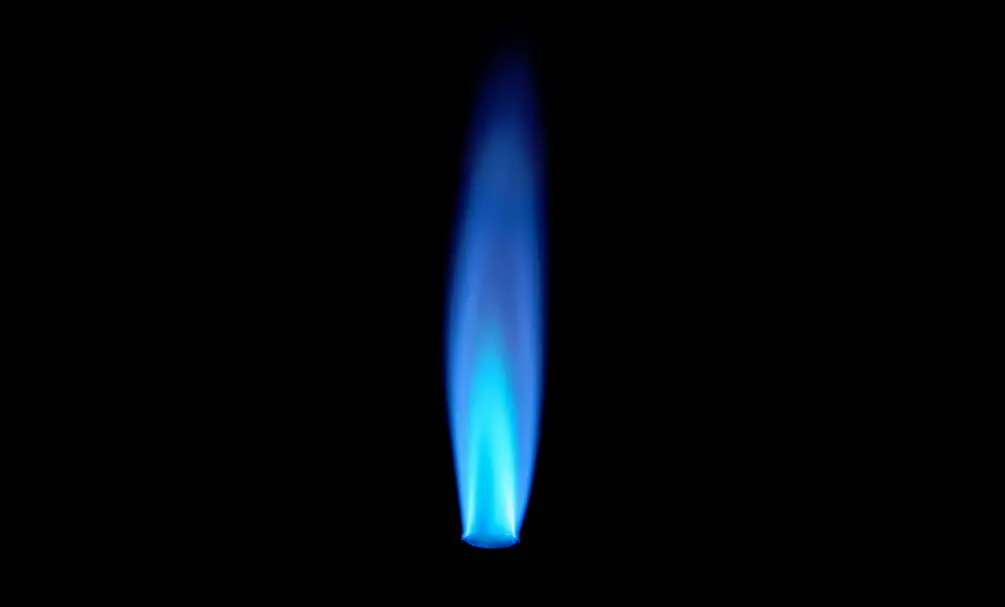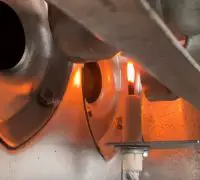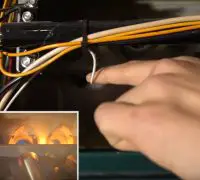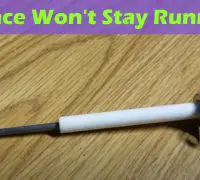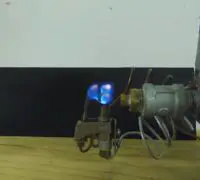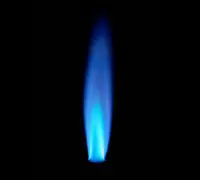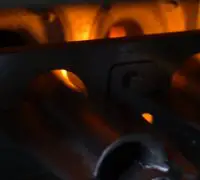If there’s one thing we’ve learned from technology so far, complicated devices come with complicated problems. It’s the same with furnaces that come with incredible features for accuracy and performance and develop all sorts of issues. Some of these problems are simple and come with an easy fix, whereas others require professional attention.
Should you have a furnace with a pilot light, you may have experienced by now all kinds of problems. It’s quite common for the furnace pilot light to keep on going out, but the problems’ causes are various and numerous. You will have to check several things and try different fixes in different situations, even if the symptom is the same: your furnace pilot keeps going out.
Some of the issues are minor and require a checkup and attention to detail; others are more complicated, and a simple restart of the furnace won’t do. Here’s what may cause and how you can fix when the furnace pilot does not remain lit.
Page Table of Contents
1. The natural gas based on demand could fluctuate.
Your furnace or your household may not be the culprit. When natural consumption is very high, the “gas grid” in your region could be close to the maximum capacity so that the gas pressure will decrease from time to time. However, even the tiniest fluctuation of gas supply to the furnace could make the pilot go out.
If the pilot light doesn’t stay lit, ask your neighbors if they’re also dealing with the gas supply. Should the problem persist, call the gas company for further investigations.
2. A draft
When the pilot light remains lit for a couple of hours and even a day and then suddenly goes out, a draft may be the culprit. When there’s nothing wrong with the furnace and the furnace pilot still goes out all of a sudden, a draft can be the leading cause.
Is it possible that a door or a window close to the furnace is open, blowing out the pilot light? Has the wind been strong and blown toward the furnace vent? Sometimes, it’s enough to make the air go down the vent pipe, blowing out the pilot light. When the problem goes on and off, you should pay attention to the wind to identify if that’s causing the pilot light to go out.
3. Dirty pilot orifice
Is the pilot light firing for a bit? If it does, what’s the color of the flame? A nice blue cone with rich blue color is the standard color for the pilot light. If so, the pilot light orifice is clean, so you shouldn’t worry about it being dirty.
Is the light yellowish-orange? Is the light blue, but it’s somewhat flickering and small? If so, some dirt could block the orifice’s gas, causing the flame to be weak and stopping it from remaining lit.
Also, the pilot tip may rust in time. A corroded tip will also block the gas flow through the supply line. Use a toothbrush and gently clean the top of the end of the pilot tip.
What’s the fix?
You will have to clean or even replace the orifice. Start with shutting off the gas valve, using an excellent needle for cleaning the orifice’s hole. Please do a thorough clean and also remove the tube, blowing through it. Should you have an air compressor or compressed air, you may use it for better cleaning.
Sometimes, replacing the pilot assembly is the best solution. Take it with you when shopping or search for the best replacement online. You will pay around $10 for the orifice and $25 to $50 for the pilot assembly.
Tip
If you don’t feel comfortable working on the furnace’s pilot light, call the professionals. It will cost you around $100 for professional cleaning of the furnace and the pilot orifice. When the furnace is clean, it works better, so it will use less energy for warming your house. You will also notice a decrease in the utility bill, and you won’t have to worry about repairs for some time.
4. Bad/damaged thermocouple
The thermocouple is a great feature that identifies a flame or the pilot light for some models. When there’s no flame and the furnace’s gas valve stays open, you may deal with a gas leak and a high risk for explosion.
A cracked, dirty, wrongfully lined up, or worn-out thermocouple won’t be capable of informing the gas valve that there’s a flame, causing the gas valve to close. When there is no gas, the pilot light won’t go on either.
What’s the fix?
It would help if you made sure that the thermocouple flame sensor is straight in the pilot flame or where the flame is supposed to be. When the flame sensor isn’t correctly aligned (it’s scarce, though), it’s easy to notice it and to fix it.
If the thermocouple or the furnace moved slightly from vibration or shock, the thermocouple could be out of its place. You only need to carefully place it in position, ensuring that the screw holding it is tightly snug.
Should the thermocouple be in its place, but the pilot light still doesn’t remain lit, you may try to clean the thermocouple. When it’s very dirty, it’s not able to identify heat. Take the heat-sensing end and use emery cloth for cleaning it.
If cleaning the thermostat still doesn’t fix the problem, you can always check it with a multimeter. Set the multimeter to DC and millivolts, connecting one of the leads to the furthest end from the thermocouple’s flame sensing area. Connect the second lead to the copper tube a couple of inches up the line.
Apply some heat to the flame sensor with a BBQ lighter. When it’s heating, it will produce millivolts, ranging from 18 to 25. The thermocouple is damaged if the multimeter isn’t able to move or reach 18.
It’s not complicated nor expensive to replace a broken thermocouple. Universal thermocouples are available, and you will pay around $25 for one. The universal thermocouples are long enough to match most furnaces, so you don’t worry about matching. If your furnace doesn’t take a universal thermocouple, 18”, 24”, 36” and 48” are the most common lengths to choose from.
However, nine times out of ten, the dirty gas orifice and faulty thermocouple make the pilot flame problems culprit.
5. A faulty Gas Regulator
The gas regulator is installed outside your house, connected to the gas line. It controls the propane or natural gas flow for your furnace and other appliances running on gas.
When the gas regulator is broken, it will not let the gas flow properly through it. A crimped/bent gas line is a common problem for propane systems.
Do you have other appliances in the house that use gas/propane? Do they also run improperly? Is the gas dryer cold? Is the flame on the gas range relatively weak? Is the pilot light going out the moment you turn on another gas appliance? If so, the pilot light doesn’t obtain enough gas, and it’s a broken gas regulator or a faulty gas line causing the problem.
What’s the fix?
It’s a problem that only the gas provider should address and fix. Call the company and don’t turn on the furnace until the problem is solved.
How should you light the pilot on the furnace?
Now that we’re talking about the pilot light not staying lit, it’s also important to talk about adequately lighting the pilot on the furnace. Make sure that the gas valve is turned on and that the furnace is turned on as well. The switch on/close to the furnace should be in the “On” position; the control panel’s circuit should also be “On.” Again, you may turn the thermostat to the “Fan” mode (if applied); the fan should come on.
If the pilot light is out and you are determined to get heat in the house until further investigations, you should light the pilot light. Here are the steps to take for adequately lighting the furnace’s pilot light.
Always begin with checking the inside panel or the furnace’s side, the user manual to see if the manufacturer listed specific steps for pilot lighting. If it did, always follow the recommended actions. If there aren’t any recommendations, the universal steps down below will be useful.
Step 1
Begin with turning the thermostat off so that it doesn’t send a heat request, and open the gas valve as you’re lighting the pilot. It’s fundamental for not causing an explosion.
Step 2
Identify the gas valve knob printed with Pilot, Off, and On. The valve is included in the large pilot light assembly and the gas line and the gas tube attached to the pilot light.
Step 3
Turn the knob to the Off position, but wait for a couple of minutes before continuing. You have to let any raw gas to spread out before lighting anything. Should you smell any gas, you must not light anything.
Step 4
Use a BBQ lighter/BBQ skewer and tape a match to its end. Continue with turning the knob to the pilot. Now it’s time to light the lighter/match on the skewer, holding the flame an inch away from the orifice of the pilot light.
Step 5
Reduce the gas button so that the gas goes to the pilot orifice. A “reset” or red or both could be the appropriate button for the job. Keep the button down until the pilot lights.
Step 6
As you’re holding down the button, you have to switch the knob from Pilot to On position. Let up on the button. When the pilot light doesn’t remain lit, you have to try again, holding the button down for a couple of seconds before switching it from Pilot to On position.
If the pilot light remains lit, you’re off the hook. If it doesn’t, you will need to go over the troubleshooting guide above once more.
